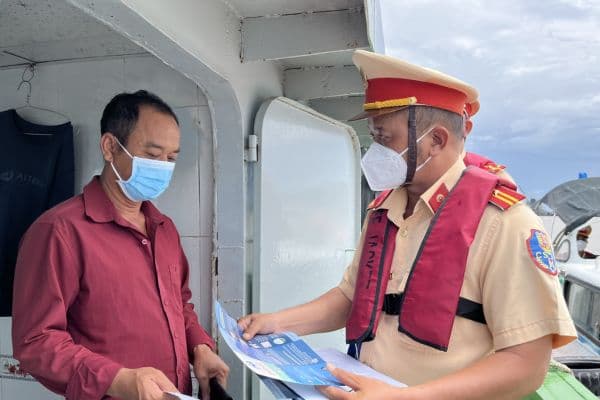What Types of Waterway Patrol and Control Plans Are There? Who Has the Authority to Issue Waterway Patrol and Control Plans?
What types of patrol and control plans are there on waterways?
Based on Article 5 of Circular 36/2023/TT-BCA, the types and contents of patrol and control plans on waterways are regulated as follows:
Types of patrol and control plans on waterways:
- General control and violation handling plans;- Peak patrol, control, and violation handling plans;- Regular, periodic, or unexpected patrol and control plans;- Thematic patrol, control, and violation handling plans;- Plans to cooperate with related units to ensure the order and safety of waterway traffic, security, and order;- Weekly work plans; patrol and control plans for the Waterway Police Team.
Contents of patrol and control plans on waterways:
The contents of patrol and control plans on waterways are managed according to confidential document policies.
Based on the work program, the requirements of ensuring traffic order and safety, social order, and the results of basic professional work, understanding the situation and characteristics of waterway routes and areas, a patrol and control plan includes the following contents:
- The basis for issuing the plan;- Purpose and requirements;- Routes, areas, and patrol and control times;- Subjects and violations to be focused on for control and handling;- Forms and contents of patrol and control;- Uniforms of officials implementing the patrol and control plan;- Deployment of forces, task allocation, equipment of technical means, weapons, support tools, anticipated situations occurring during patrol and control, and measures for resolution; task allocation for the organization and implementation and policies for reporting the situation and results of patrol and control.

What types of patrol and control plans are there on waterways? Who has the authority to issue patrol and control plans on waterways? (Image from the internet)
Who has the authority to issue patrol and control plans on waterways?
Pursuant to Article 6 of Circular 36/2023/TT-BCA, the authority to issue patrol and control plans on waterways is regulated as follows:
Minister of Public Security:
Issues the patrol, control, and violation handling plans on waterways nationwide.
Director General of the Traffic Police Department:
Directly issues the patrol, control, and violation handling plans on waterways according to routes, areas, or nationwide.
Directors of Provincial/Municipal Police:
Issues patrol, control, and violation handling plans within the management scope.
In which cases can the waterway police stop a vehicle?
According to Article 8 of Circular 36/2023/TT-BCA, the waterway police, when performing patrol and control tasks according to the plan, can stop vehicles for control in the following four cases:
- Directly detecting or through technical means and professional equipment detecting and recording signs of legal violations;- Implementing directives, patrol, control plans, or work plans approved by the Squadron Chief; Head of Traffic Police; Head of District Police;- Having a written request to stop vehicles from the heads or deputies of Investigative Agencies at all levels or relevant agencies to control and serve the national security protection work, ensuring social order and safety;- Receiving reports or denunciations of legal violations related to people and vehicles participating in traffic.
Waterway police stopping vehicles for control must meet the following requirements:
- Ensuring safety, compliance with the law, and not causing obstructions to traffic activities. When stopping a vehicle, the control and handling of violations (if any) must be done in accordance with the law;- Selecting a control position that ensures the navigation channel is deep, wide, and clear, with no vision obstructions; ensuring that vehicle stopping and control are open and transparent;- In the case of stopping to control vehicles transporting flammable, explosive, toxic substances, or other dangerous goods, in addition to meeting the requirements at points a and b of this clause, they must ensure safety measures guiding the vehicle away from densely populated areas or places with few people before stopping for control.
Instructions for stopping a vehicle by the waterway police:
- When stopping a vehicle for control, based on the traffic density, the situation and characteristics of the navigation route, ensuring safety and normal traffic of other vehicles, implement as follows:
+ During the day, direct the signal flag "Flag K" toward the vehicle to be controlled, wave three times vertically from top to bottom, and simultaneously emit a long sound, a short sound, and a long sound;+ At night, direct the signal light toward the vehicle to be controlled, emit one long flash, one short flash, and one long flash, and simultaneously emit a long sound, a short sound, and a long sound;+ Besides the above signals, loudspeakers can be used to guide the vehicle to stop or reduce speed for control.
LawNet